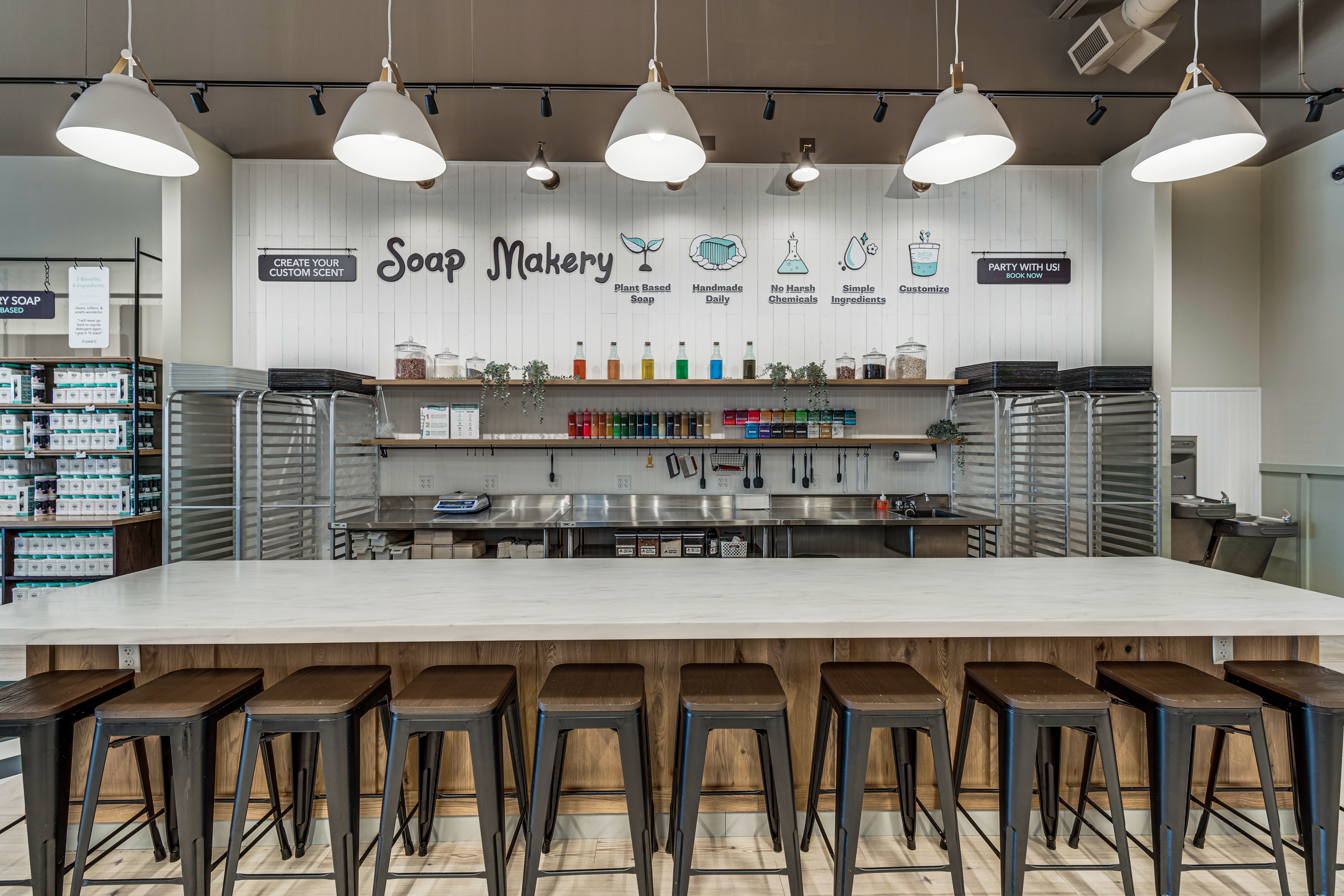Call Sales: +1 (833) 437-3835
Call Sales: +1 (833) 437-3835
Coral Drake | May 30, 2024 |

Physical store traffic generation is getting harder in many ways, but retailers also have new tools to motivate in-store shopping.
Not only does getting customers in brick-and-mortar stores improve sales and bring in new customers, but it can improve online store sales too. According to one survey, 65% of respondents said that in-store experience makes them more likely to interact with that brand online.
Here are in-store marketing strategies that work, even in the age of online shopping.
Showcase products by encouraging customers to interact with them. In-store events that enable experiences can create lifelong loyalty to your brand, as well as bring in new traffic.
A kitchenware store could host a cooking demonstration where attendees learn to prepare a simple dish using the store's products. A pet store might organize an event where experts teach pet owners how to train their pets.
Work with, not against, the other businesses in your area. Build a sense of community by inviting local artists, craftspeople, and small-business owners to set up at your store.
A bookstore could host a local author’s book signing event or a bakery could collaborate with nearby farmers to host a farmer's market featuring fresh, local produce.
These in-store marketing strategies demonstrate that stores are interested in more than just profit by giving back to the community at the same time as they introduce potential new customers to what your brand offers.
Consider turning your store into a “must-see” attraction, giving patrons a reason to visit other than spending money. A furniture store could set up a cozy reading nook with books and magazines, or a garden center might create a beautiful demonstration garden that showcases different plants and landscaping ideas.
Attracting customers to spend quality time in the store can lead to increased sales and brand loyalty.
Conforming to local aesthetics, preserving local history, and appealing to community pride makes the in-store shopping experience unique.
Even the largest brands can bring variety and familiarity to each location. A supermarket chain might display local artists' work or decorate its space with historical photos of the community. A coffee shop could host live music events featuring local musicians.
How associates interact with customers in terms of product selection, feature comparison, and matching their recommendations to shoppers’ specific needs and preferences will do a lot to determine how customers rate their in-store experience.
Educate your in-store associates not only on the products you sell but also on the brand’s approach to customer service.
In-store events are a powerful and straightforward way to attract customers to in-store shopping. However, if not done properly, they can be expensive, ineffective, and may even hurt your brand image. Here’s how to do in-store events well:
While eCommerce has been the focus for digital initiatives in retail for over a decade, physical stores are also harnessing technological innovations to perfect the shopping experience:
QR codes offer extensive information effortlessly, without the need for a salesperson. They can unlock stories about where products are sourced and their environmental impact, link shoppers to in-store promotions, provide coupons or loyalty rewards, offer recipes or complementary products, and much more.
QR codes also make shopping more convenient. Rather than carrying products around the store and waiting in line to pay, customers can scan the codes as they shop. Software accepts payment and can even schedule the item for delivery to customers.
Streamlined checkout and payment are essential. It doesn’t matter how great of an in-store customer experience someone has had, if they have to wait forever to leave with their products, they’re not going to be happy. Invest in self-checkout kiosks and mobile checkout solutions to meet customers anywhere they are ready to pay.
Extended reality (XR) encompasses virtual, augmented, mixed, and other realities that alter or blend a person’s view of real life with computer-generated sensory inputs. XR opens a world of possibilities for in-store experiences.
Shoppers can virtually try on new makeup shades, shoes, and clothes, changing their colors, sizes, and styles to see how they fit and coordinate with other apparel they already own or are thinking about buying. Being able to try on more, more easily, makes it more likely that shoppers will buy more.
Revel Systems offers a range of technological solutions to improve the retail store engagement and in-store shopping. Customer display systems allow customers to view and confirm their orders in real-time, reducing errors and increasing customer confidence. They also promote loyalty programs and provide special offers.
Self-service kiosks reduce wait times and streamline the checkout process, empowering customers to manage their own shopping experiences. Mobile payment options allow customers to make purchases throughout the store without waiting in line.
Revel’s POS system can track purchasing history and preferences, so you can use customer data to personalize services and offerings and provide a more customized shopping experience.
Transform your retail space into an engaging and dynamic environment that attracts and retains customers by creating unforgettable in-store experiences that set your brand apart.